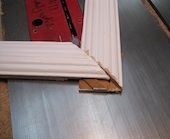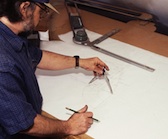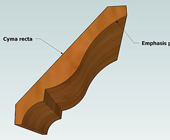Have you ever said to yourself, “How’d they do that??” I have. Lots of times. And when I found a mysterious casing on a recent job, I said it again. This time, though, it took a little longer than a day or two to figure out how they did it.
I was in the midst of trimming out a recent remodel when one of the guys described a miter joint he’d noticed while doing the demo work. What he described sounded more like a Japanese temple building joint than the conventional miter joint found in your typical American house. I was intrigued. When he found a sample of the joint and showed it to me, I was amazed. Read the full article…








